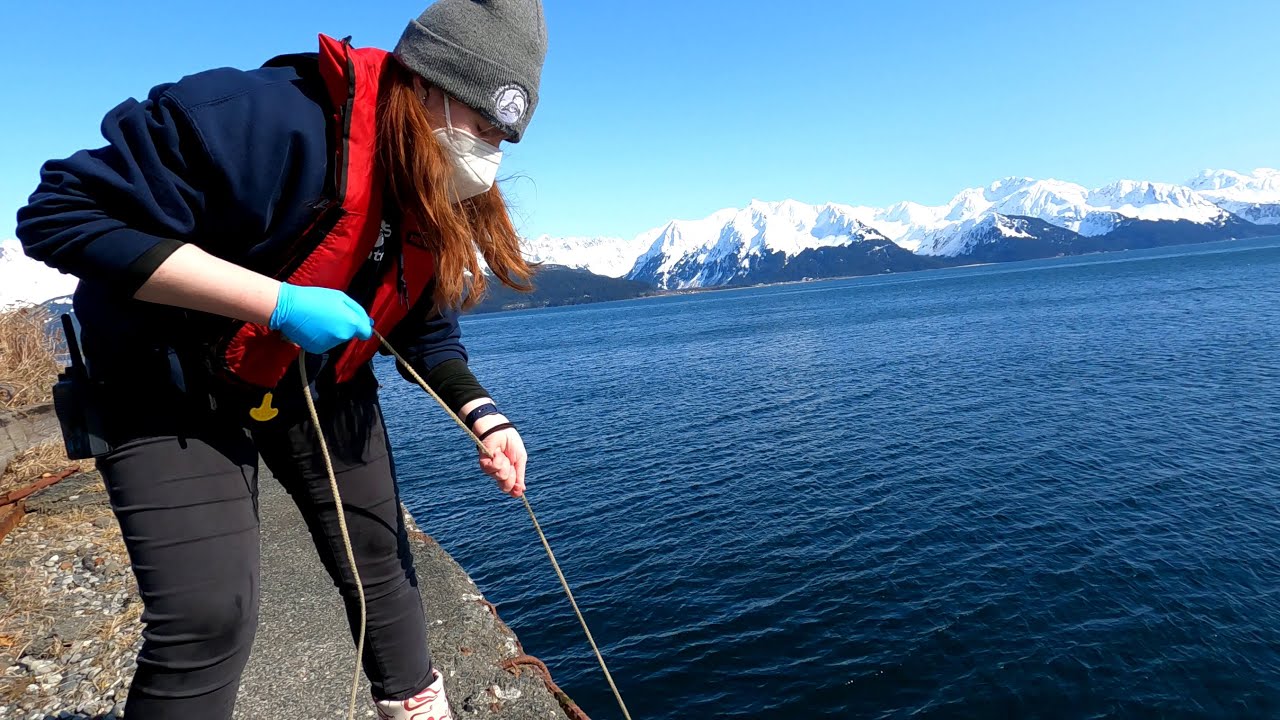*****
Summary of Transcript:
The video is a virtual visit to the Alaska Sea Life Center. The hosts introduce themselves and thank their sponsor, Royal Caribbean Group. They start by talking about the weather and the sunrise in Alaska. They mention they will go outside to show viewers what the aquarium department does. They tag along with the aquarists and go to the beach, where they flip rocks and look for marine animals. They explain that the center has a collection permit and can take animals back to educate people or figure out what they are. They found a mossy kite, crabs, a hermit crab, and sunflower sea stars. They also talk about gunnels, skinny fish that survive under rocks. The hosts are excited about what they found and encourage viewers to visit the center to see these animals up close.
*****
Summary of Description:
The Alaska SeaLife Center offers a free virtual program every Wednesday at 11 AM, which gives an inside look at the center’s marine life and the work of the aquarists. The Alaska Department of Fish and Game authorized the program and made it possible with support from the Royal Caribbean Group.
*****
Exploring Local Marine Life with Aquarists from Alaska SeaLife Center
The Alaska SeaLife Center is a world-renowned facility dedicated to marine research and wildlife rehabilitation. Recently, the center’s aquarists took us on an adventure to explore local fish and marine invertebrates in the Alaskan waters.
Collection Methods
To collect samples of local marine life, the aquarists use different methods. One of the most common methods involves using a trawl net. A trawl net is a deep-sea fishing net dragged by a boat to catch fish and other marine organisms. The trawl net used by the aquarists is made of fine mesh to prevent animal harm.
The aquarists also use a variety of nets to catch marine invertebrates. For example, they use a dip net to scoop up small animals like shrimp and krill. They also use a seine net, a long net with floats on the top and lead weights at the bottom, to capture larger animals like crabs and fish.
Recording and Identifying Species
After collecting samples, the aquarists examine each animal to identify the species. They record important information such as the size and sex of the animal and the location where it was collected. This information is crucial for tracking changes in the marine environment and is shared with biologists and other researchers.
The aquarists use a variety of tools to help identify marine life. They use a microscope to examine tiny organisms like zooplankton and larvae. They also use a reference book that contains pictures and descriptions of different species to identify the animals they catch.
Animal Care
The Alaska SeaLife Center takes great care to ensure the health and well-being of its animals. When local fish and marine invertebrates are collected, they are placed in large holding tanks with special filters to ensure a pristine environment. The animals are closely monitored and fed a diet specific to their needs.
The center also ensures that the animals collected are released back into the wild as soon as possible. To do this, the aquarists take the animals to the release site and place them back into the water. This process is done carefully to avoid harm to the animals.
Learn More with Virtual Visits
Virtual Visit is a program offered by the Alaska SeaLife Center. The program takes you on a virtual tour of the facility and provides insights into the life of marine animals. The program is offered every Wednesday at 11 AM and is free for all ages.
This program is made possible with generous support from the Royal Caribbean Group. The Alaska SeaLife Center relies on donations from individuals and organizations to support its research and wildlife rehabilitation.
Conclusion
The Alaska SeaLife Center is committed to studying and protecting marine life. The aquarists’ work in collecting and identifying local fish and aquatic invertebrates is an important part of this mission. By caring for the animals and recording vital information, the center contributes to a greater understanding of the ocean and its inhabitants. The center can share its knowledge and passion for marine life with programs like Virtual Visits.
*****
Source Description
We recently had the chance to tag along with our aquarists as they went out and took a closer look at our local marine life. Learn some methods to collect and record local fish and marine invertebrates here at the Alaska SeaLife Center.
Activities shown authorized by ALASKA DEPARTMENT OF FISH AND GAME AQUATIC RESOURCE PERMIT No. CF-22-016
Join us each Wednesday at 11 AM for a FREE virtual program for all ages.
Virtual Visits bring you an inside look at the animals and staff that contribute every day to the mission of the Alaska SeaLife Center. Whether you consider yourself an ASLC amateur or “a-fish-tornado,” there is always something to discover!
Virtual Visits are made possible by generous support from the Royal Caribbean Group.


